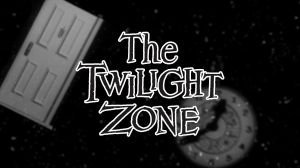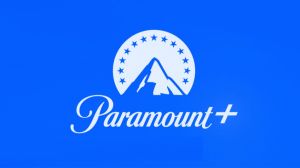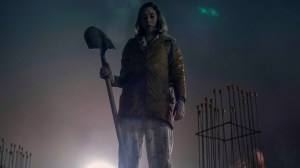American Horror Story has consistently been a love letter to classic horror movies and media since it premiered in 2011. We’ve watched all sorts of horror staples make their way into the show, from freak shows to aliens to the spawn of Satan themselves. And fans don’t have to watch further than season one for the nods to classic horror movies and horror tropes, some of which would come to define the series to this day. Even if you’re not a fan of Ryan Murphy, you can appreciate the layers and the reverence for horror in fictional and non-fictional works.
Videos by ComicBook.com
Season 1, better known as “Murder House,” features a generous cross-section of the horror movie landscape. It takes some of its setting from the numerous haunted house tales across the decades, with Amityville Horror floating up to the top. But alongside the ghost story is a dose of modern gothic horror, some true crime-inspired horror, a dash of slasher lore, and some works of grotesque medical experimentation that would give most viewers nightmares. It’s all there, with nods to those who came before.
Scroll down to take in some of the musical cues, themes, Easter eggs, and much more from American Horror Story‘s first season. We try to dive in a bit more than just stating the obvious, but sometimes that’s what you’re stuck with. Luckily, there is always room for a few detours in any list.
1 ) Hitchcock Vibes (Vertigo, Psycho)

Alfred Hitchcock’s classic thrillers Vertigo and Psycho get a nod from the very start of the season. Not only is the music from Vertigo and Psycho present during key scenes, but the death of Rosa Salazar’s Maria and the proto-slasher qualities of Psycho work well in tandem. While Salazar is far from the shower when she is stabbed, the music hits still give the viewer a similar effect.
Music from modern horror films also gets a little loving from AHS, with Robert Zemeckis’ What Lies Beneath having a musical nod along with some overlapping themes. Similar happens to some more classic horror movies in later episodes.
2) Frankenstein
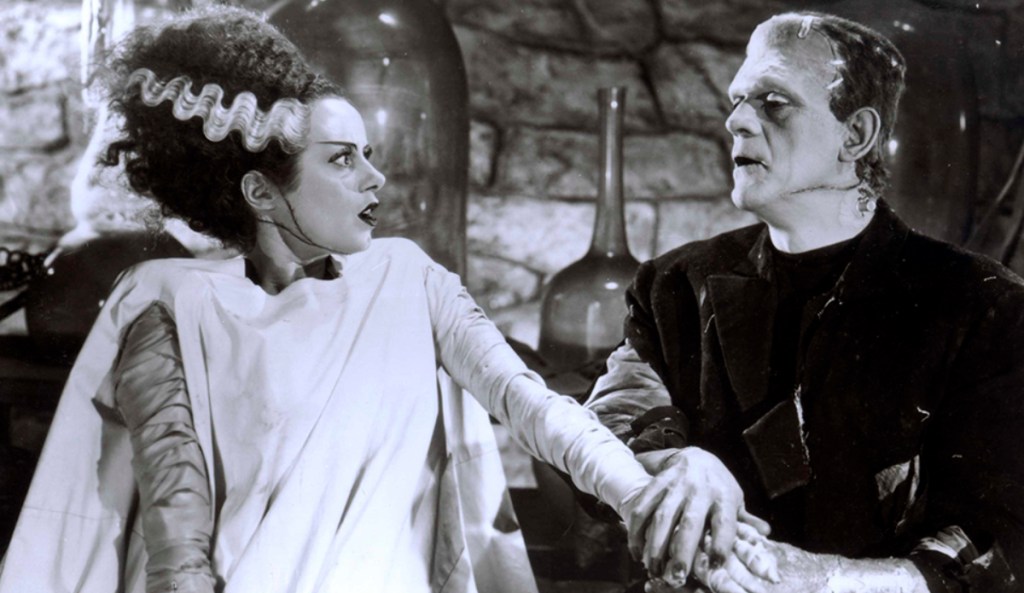
The saga of Nora Montgomery and her husband, Dr. Charles Montgomery, is at the center of the Murder House’s deaths and an apparent deal with the devil. With the Montgomerys, Murphy and company used the ideas around Frankenstein to convey the loss they felt from losing their child. Left crazed by his grief, Dr. Montgomery switches from performing illegal abortions in the home to trying to raise the dead, and his child. He sews the parts of his child together with animal parts, clearly losing his mind in the process.
3) Bram Stoker’s Dracula
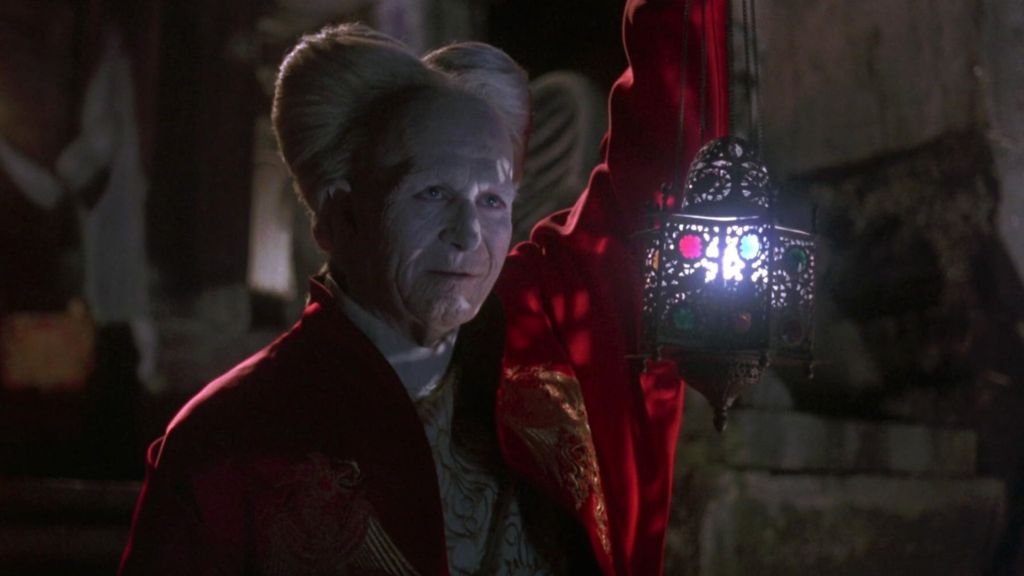
The Montgomery’s story also utilizes a lot of the music from Bram Stoker’s Dracula in 1992, helping to give atmosphere to the show’s flashbacks and its use of them to show how it parallels the present. We also seem to be one of Murphy’s early inclusions of true crime within his work, inserting the Black Dahlia’s murder into the twisted history of the Murder House.
4) Twisted Nerve
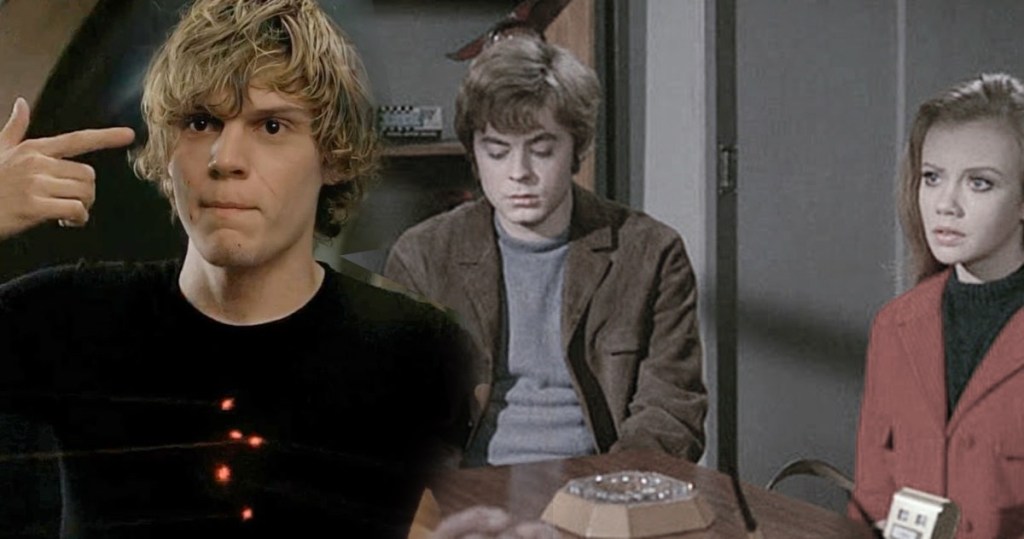
This early example of a slasher is likely best known for its whistling theme tune, eerily whistled by the movie’s killer as he stalks victims. It’s used to a similar effect in American Horror Story, also taking a few cues from Quentin Tarantino’s Kill Bill for the soundtrack. The character of Martin in Twisted is a smudgy reflection of Tate (Evan Peters). Both kill, and both obsess over their objects of affection. Tate and Martin also share an overbearing mother, though that tidbit is revealed late in the season for AHS. Both are clear examples of how young men in different eras react when their worldview is damaged.
5) To the Devil a Daughter

While there are still a few more references to Satan and the denizens of Hell that have been created over the years, one scene from Hammer Horror’s To the Devil…A Daughter is recreated almost exactly on American Horror Story with the Rubber Man’s appearance and assault of Vivien Harmon. In the Christopher Lee film, the scene where the cult impregnates Catherine, played by Nastassja Kinski. More comes later once the pregnancy reaches term, but the Rubber Man’s assault is a carbon copy of the movie’s scene.
6) Beetlejuice
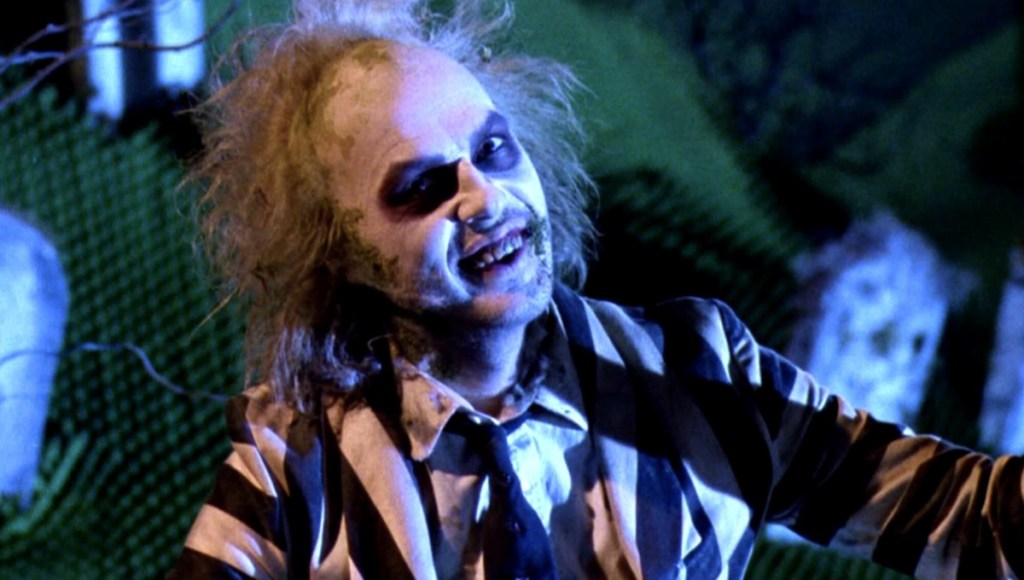
Jumping ahead to the end of the season, the final status of the Murder House takes some cues from Beetlejuice. The Maitlinds spend most of the movie trying to scare the new owners out of their home, continuing until they grow to love Lydia and see the perils of tapping Betelgeuse to ramp up the fear. There is no lovable poltergeist in AHS, but there are quite a few ghosts with differing loyalties. On one side, the ghosts of the Harmons join with the other “good” ghosts trapped in the house to keep the new owners safe by scaring them away. Opposing them are Tate and the other malevolent spirits trapped in the home.
7) The Shining
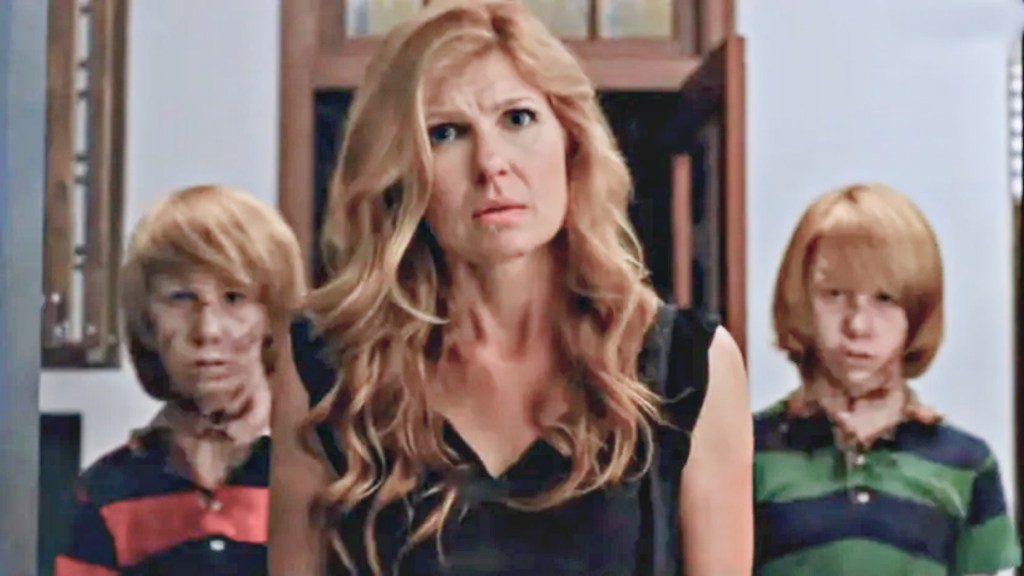
Back to the very start of the first season, we are introduced to several creepy kids. One is the younger Adelaide Langdon, who is still finding her way into the Murder House property without invites. But it’s the red-haired twins that get the attention here because they are a clear reference to the slaughtered twins from Stanley Kubrick’s The Shining. It’s hard to think of anything different when you catch them standing behind Vivien, their wounds that led to their death out in the open.
8) Rosemary’s Baby / Demon Seed
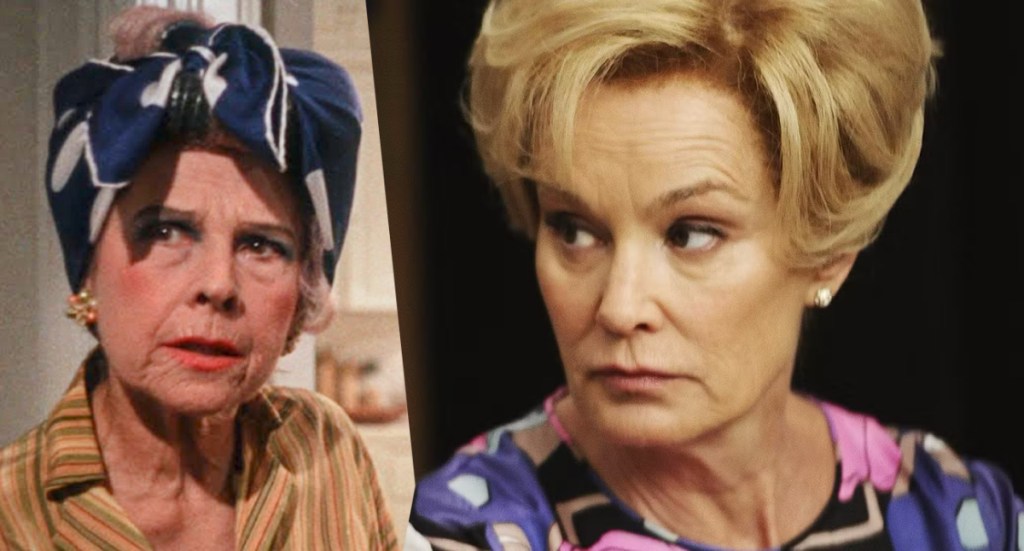
Another big source of inspiration follows the sexual assault scene with the Rubber Man, detailing the aftermath of the incident. As has been teased throughout, the baby of a ghost and a human is fated to become the Antichrist. It’s also a sign the Apocalypse has begun, something which plays out during the later Apocalypse season. It ends up connecting several seasons of American Horror Story, also, which is fun to see if you’re a regular fan of the show.
Constance Langdon is also a direct reference to Ruth Gordon’s nosy neighbor hiding a sinister secret in Rosemary’s Baby. Both character are also involved in the birthing ceremony, taking the evil twin to raise herself after Vivien perishes from labor. Vivien gets the other stillborn baby twin back in the afterlife after Nora Montgomery had taken it to raise and keep safe.
9) Halloween
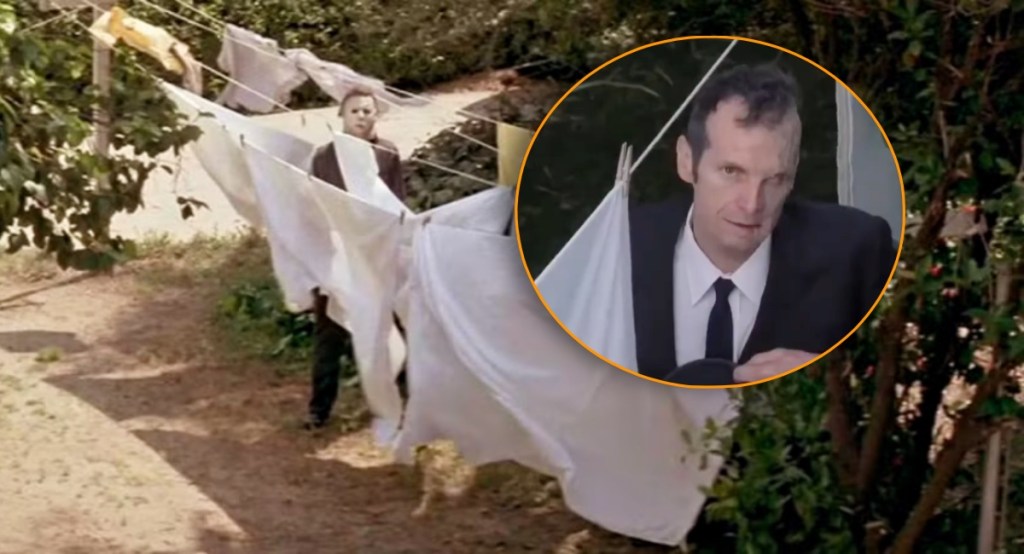
A smaller reference, but also a pretty clear one, comes with the introduction of Denis O’Hare’s character, Larry Harvey. The first time we see him outside of the Harmon’s home, he is staring up at their bedroom while amongst some hanging laundry. It’s a match for a similar shot in John Carpenter’s Halloween, where Michael Myers does a similar creepy stare up. They take different, bloodier routes from that point, but it is a nice little slasher nod early on.
10) The Omen
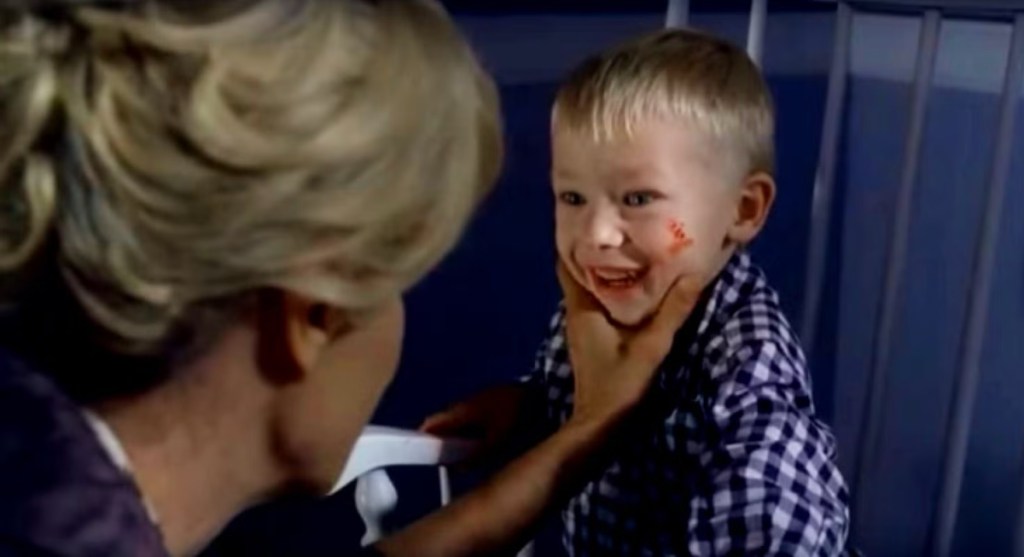
And finally, one of the biggest references has to be The Omen. More would come during the Apocalypse season, years later, but we do get a taste of Michael Langdon at the end of the season. As Constance is doing her best to raise her adopted son, she is railroaded by Michael, who turns out just like his father, Tate, and murders his nanny while Constance is out. It’s a child who is evil, without any real redeeming qualities. But even with the bloody demise of the nanny, he still comes off as a little boy causing mischief, who ends the season by smiling up at Constance with blood on his face.
Michael Langdon and Damien from The Omen are different in looks but similar in spirit. The lore surrounding the birth of the Antichrist is also acknowledged in AHS, showing that there is an entire world of spirits that the living are unaware of.
These ten movies are only the start for American Horror Story as a whole. Season 2’s Asylum and Season 3’s Coven both continue the reverence, even diving into some more horrifying corners of real life. Let us know your favorite AHS reference in the comments.


